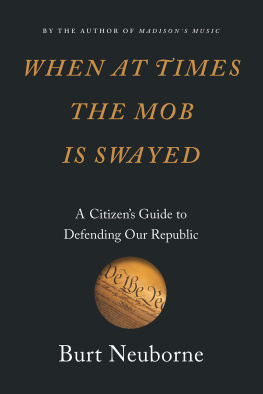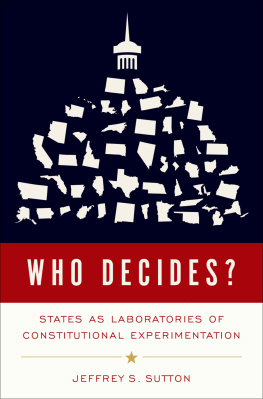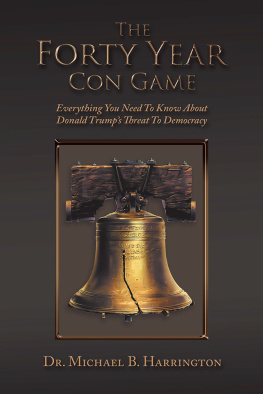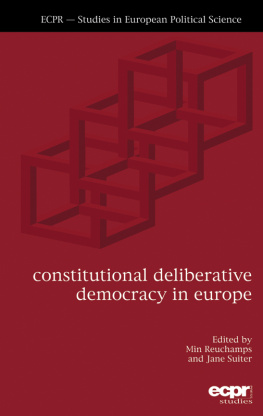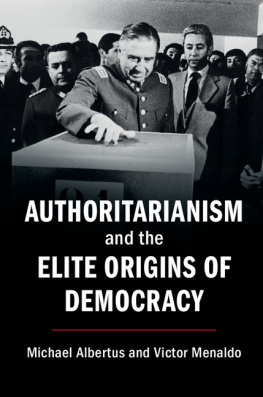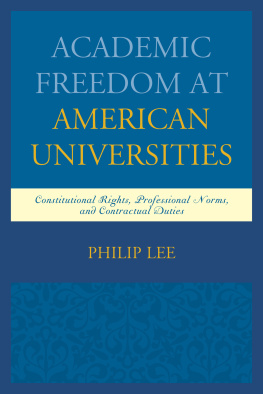
When at Times the Mob Is Swayed
ALSO BY BURT NEUBORNE
Madisons Music: On Reading the First Amendment
Civil and Political Rights in the United States (4th ed.),
vol. 1 (with Norman Dorsen and Paul Bender);
vol. 2 (with Norman Dorsen, Paul Bender, and Sylvia Law)
Unquestioning Obedience to the President (with Leon Friedman)
When at Times the Mob Is Swayed
A Citizens Guide to Defending Our Republic
Burt Neuborne

For my wife, Helen
My brilliant friend for sixty years
So when at times the mob is swayed
To carry praise or blame too far
We may choose something like a star
To stay our minds on and be staid.
Robert Frost, Choose Something like a Star, 1916
CONTENTS
When at Times the Mob Is Swayed
How Good Are the Brakes on the Democracy Train?
In more than fifty-five years of practicing law, Ive sued every American president since Lyndon Johnson, most of them more than once. When I wasnt suing presidents, as national legal director of the American Civil Liberties Union and founding legal director of the Brennan Center for Justice, I sued governors, mayors, police chiefs, FBI directors, generals, school boards, city council members, judges, cops, and any other government official I could get my hands on who appeared to be violating the Constitution.
The constitutional enforcement business was pretty good. I never experienced a shortage of customers. Much of the time the judicial system worked just as advertised, shielding vulnerable targets from unfair abuse at the hands of the politically powerful. Ive learned from bitter experience, though, that without an excellent set of constitutional brakes, American democracy can quickly morph into an angry, fearful moba runaway political train fully capable of crushing anyone in its path.
Faced, as we are these days, with a charismatic, authoritarian president named Donald Trump, whose genius for creating scapegoats, bending the truth, and fomenting divisiveness poses a profound threat to many of our constitutional values, its long past time to check the brakes on the twenty-first-century American Democracy Express. Are the brakes strong enough to stop a runaway Trumpist train fueled by racism, misogyny, envy, and fear?
The shortand disturbinganswer is that the brakes on the first-class cars, especially the gilded private cars at the head of the train, are still in pretty good shape. But if youre traveling in coach, or riding outside because you cant afford a ticket, you run a serious risk of being the victim of an ugly train wreckbecause the brakes on the low end of the Democracy Express are in terrible shape. I hope that you will treat this book, in part, as a warning from your neighborhood constitutional cop about the faulty brakes; and, in part, as a repair manual for folks willing to get their hands dirty fixing them.
I am confident that sustained political and legal effort can get us back on track. My most important message, though, is that there is no constitutional mechanic in the sky ready to swoop down and save American democracy from Donald Trump at the head of a populist mob. The fate of American democracy is up to us.
The legendary group of FoundersGeorge Washington, James Madison, John Adams, John Jay, and Alexander Hamiltonwho built the railroad were so concerned about runaway democratic trains that they installed a dual braking systeminternal and external. In 1787, they designed an internal set of self-checking electoral brakes designed to prevent an overheated electoral majority from picking up too much speed in any one direction. As a backup, in 1791, they installed a second, external set of brakes empowering independent, politically neutral judges, headed by the Supreme Court, to slow or stop the democracy train if, despite the internal brakes, the electoral majority threatened to run roughshod over vulnerable individuals and groups.
The sad truth is that, today, neither braking system is working well enough to stop a runaway populist train fueled by racism, religious intolerance, and ideological fervor from jumping the constitutional tracks and harming the weak and poor. Anyone who tells you differently either doesnt understand how the brakes work, doesnt care who gets run over, or is working for Vladimir Putin.
THE INTERNAL BRAKES
The Founders internal brakes havent been overhauled in more than two hundred years. They are in dreadful shape. As originally designed, the internal brakes relied on multiple, relatively equal voting blocs with differing, often conflicting, interests to check each other automatically. The theory was that the interaction of competing voting blocs would prevent any single group of voters from accumulating enough governing power to run roughshod over the losers.
As a matter of history, the Founders internal electoral braking system worked tolerably well for a long time, with the tragic exception of the Civil War. Today, though, the Founders electoral brakes are in shambles. Instead of a self-regulating system based on checks and balances, two dominant political partiesRepublican and Democraticprovide a ready path for a single, ideologically linked group of voters to gain complete control of the government and, once in power, to abuse that control by crushing their opponents, along with any other scapegoats that happen to get in the way.
The Founders were remarkable visionaries who literally invented the idea of a mass democracy governing a large geographical area. Much of this book is devoted to their brilliant political innovations. The one thing the Founders didnt foresee, though, was the crucial role of political parties in organizing and operating the democratic process. In fact, the Founders hated the idea of political parties, disparagingly calling them factions. It turns out, though, that you cant run a mass representative democracy without some coordinating mechanism to organize the process. Thats where political parties come inlike it or not.
For most of our national history, the Founders failure to have anticipated the need for political parties didnt do much harm to their internal braking mechanism because nineteenth- and twentieth-century American political parties tended to be either small regional groupings capable of checking each other, or big tents that included a bewildering array of self-checking interests crossing ideological, economic, and racial fault lines. Once upon a time, liberal Republicans were to the left of conservative Democrats, and just as many blacks supported the Republican Party, the party of Abraham Lincoln, as supported the Democrats, long the party of racial segregation.
Today, the Republican and Democratic parties have evolved into competing ideological brand names, functioning as closed political silos with virtually no points of overlap. Too often, adherents of each party demonize their political opponents, receive their political information from diametrically opposed media outlets, and view politics as an apocalyptic struggle between right and wrong. Even worse for the internal braking system, todays political parties also predictably divide by particularly incendiary criteria such as race, religion, ethnic origin, and economic status, setting the stage for ferocious partisan competition to win bitterly contested elections by narrow margins, followed by ruthless efforts to ram an ideological agenda down the throats of the electoral losers. Thus, instead of organizing a self-checking mechanism governed by compromise, our current hyper-partisan political parties function as accelerants, enabling extreme partisans to set the throttle at full speed without caring much who gets run over.
Next page
